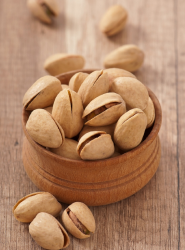The Ultimate Guide to X-Ray Inspection for Yogurt and Yogurt-Based Products
Cupped products, such as Greek yogurt and multi-component flavored yogurts, present a unique set of inspection challenges. These high-value items require scrutiny for both physical hazards and commercial quality specifications.
Detecting High-Risk Physical Contaminants in Cupped Yogurt
An X-ray system’s primary function is to serve as a final "safety net" for finding "unwanted physical contaminants". For cupped yogurt, the greatest risks come from dense foreign objects that can be introduced during processing or from the packaging itself.
X-ray inspection is highly effective at identifying:
·Metal: Including small ferrous and non-ferrous metal fragments from machinery.
·Glass: A critical risk, especially as glass shards can originate from packaging or containers on the line.
·Stone: Mineral stone fragments that may be introduced with raw ingredients.
·Rigid Plastic: X-ray can identify "certain plastics" or dense, rigid plastic pieces that traditional systems miss.
By detecting these hazards at the end of the line, manufacturers can guarantee product safety before shipment.
Capacity Filling Control and Beyond
For the yogurt category, particularly high-margin products like Greek and flavored varieties, quality control is as important as safety. This is where X-ray inspection demonstrates its full value, moving beyond contaminant detection to become a profit-protection tool.
Capacity Filling Control
Maintaining the correct fill level is a "constant challenge" for all liquid-based food manufacturers. X-ray inspection is used to confirm accurate fill-levels for liquid based dairy products such as yoghurt. The business case for this is twofold:
1. Preventing Under-fills: An under-filled cup leads directly to poor "consumer satisfaction" and "customer reclamations", eroding brand trust.
2. Preventing Over-fills: Over-fills are "equally undesirable". They "represent product giveaway, resulting in a loss of profit". On a high-speed line, even a minor, consistent over-fill results in significant annual financial losses.
Beyond Fill Levels: Component Verification and Pack Inspection
Modern X-ray systems perform sophisticated checks that simple checkweighers cannot. This capability is essential for "Flavored Yogurt" and multi-pack formats.
● Component Verification: For yogurts sold with toppings (e.g., granola, fruit, or chocolate), a standard scale can only verify total weight. It cannot tell if the topping is missing. X-ray systems can perform "component verification" to "ensure yogurts with toppings contain both components".
● Product Uniformity: For fruit-on-the-bottom or blended yogurts, X-ray can check for "appropriate distribution of fruit", ensuring a consistent consumer experience.
● Multi-Pack Inspection: When yogurt is sold in trays (e.g., 6-packs), a checkweigher may confirm the total tray weight, but it cannot identify a missing cup if another cup is overfilled. X-ray technology can "detect missing pot in the tray", perform an accurate "component count", and conduct "zoned mass inspection... on a tray of yoghurts".
X-Ray Inspection for Yogurt Drinks and Pouches
The inspection challenges for liquid-based products like yogurt drinks and squeezable pouches are different from cupped products. The primary risk often comes from processing machinery, and the optimal inspection point is frequently upstream, before the product is packaged.
Identifying Difficult Contaminants in Liquid and Semi-Liquid Products
Yogurt drinks and purees are susceptible to contamination from the machinery used to pump, mix, and process them. X-ray inspection is designed to find physical contaminants within this liquid or semi-liquid flow.
The key hazards, as mandated for inspection, include metal wire, rigid plastic, stone, or glass. The risk of "metal wire" is particularly high in these product types, as it can be introduced from "broken blades, wire, or metal fragments" from sieves, mixers, or pumps. X-ray systems are calibrated to detect these specific foreign bodies, as well as glass shards, stone, and rigid plastic fragments, within the product flow.
Why X-Ray is Essential for Dairy: Overcoming Metal Detector Limitations
The most significant, failure of metal detectors is their inability to inspect products packaged with metal. Most single-serving yogurt cups are sealed with a metallized foil lid. This packaging is a "challenge to metal detection" and, in most cases, "metal detectors cannot inspect" them at all..
As established, the key risks in yogurt production include glass, stone, and rigid plastic. A metal detector offers no protection against these common and dangerous non-metal contaminants. X-ray inspection provides a "much wider detection spectrum", reliably finding metal, glass, stone, dense plastic, and bone.
X-Ray Inspection vs. Metal Detectors for Yogurt Products
Feature / Challenge | X-Ray Inspection | Traditional Metal Detector |
Detectable Contaminants | Metal, Glass, Stone, Rigid Plastic, Bone | Metal Only (Ferrous, Non-Ferrous) |
Inspection of Foil Lids | Yes (Unaffected) | No (Creates interference; cannot inspect) |
"Product Effect" (Salt/Moisture) | No (Unaffected) | Yes (High false rejection rate) |
Simultaneous Quality Checks | Yes (Fill Level, Mass, Missing Items) | No |
The Future of Yogurt Safety: AI and Deep Learning in X-Ray Inspection
The next evolution of X-ray inspection is already here, driven by the integration of Artificial Intelligence (AI) and deep learning. This is transforming inspection systems from static detectors into adaptive, intelligent partners in quality assurance.
Reducing False Positives with Intelligent Inspection
A primary challenge for any automated inspection system is the false positive. In flavored yogurts, "naturally occurring variations"—such as fruit chunks, granola clusters, or natural density shifts in the product—can be mistaken for contaminants by a standard system.
AI-powered deep learning algorithms "analyze vast amounts of image data" and "analyze subtle differences in texture, density, and composition". By training on these vast datasets, the system learns to distinguish between a hazardous contaminant (like a glass shard) and a harmless, expected product variation (like a blueberry). This ability to distinguish between true defects and natural product variations dramatically minimize false positives and reducing false rejections. For the plant manager, this translates directly into prevent unnecessary food waste and increasing uptime.
Enhancing Detection and Automating Process Control
AI is also expanding the range of detectable objects, allowing systems to identify challenging contaminants that were previously invisible, such as very small bones or low-density plastics.
However, the true paradigm shift is the move from reactive detection to proactive process control. AI systems can analyze X-ray absorption patterns and adjusts its weight calculations automatically to ensure mass measurement remains consistent. When this intelligence is paired with machine-to-machine communication, the X-ray system can provide optional feedback to the filling machine to automatically adjust fill levels.
FAQs About X-Ray Inspection for Yogurt
Q1: Is x-ray inspection safe for yogurt and other dairy foods?
Yes, it is 100% safe. X-ray inspection systems used in the food industry are highly regulated. The machines do not contain a "live" radiation source; they generate X-rays, and when the x-ray is off, there is no radiation present. The food product spends less than a second in the beam and "is not radioactive".
Q2: Will x-ray inspection affect the taste, texture, or nutritional value of my yogurt?
No. The radiation dose is incredibly low. The flavor and nutritional value are unchanged. Food that has been inspected by X-ray is indistinguishable from food that hasn't, and it loses none of its nutritional value. The levels are so low that even certified organic products can be X-rayed without a change in status.
Q3: What contaminants can an X-ray system detect in yogurt?
X-ray inspection works by detecting differences in density. It is ideal for finding contaminants that are denser than the yogurt product itself. This includes metal (both ferrous and non-ferrous), glass fragments, mineral stone, calcified bone, and dense plastics (like PVC, or plastics containing chlorine).
Q4: What contaminants can X-ray not detect?
As a general rule, X-ray systems cannot reliably detect low-density materials or contaminants that have a density similar to the product (which is mostly water). This list includes bugs, wood, hair, string, paper, and low-density plastics such as Polyethylene or Polypropylene.
Q5: Can X-ray systems inspect multi-pack yogurts?
Yes, this is a key advantage of the technology. X-ray systems can inspect an entire sealed tray or case. They can perform a component count, detect missing pot in the tray, and verify the mass of individual zones within the pack to ensure it is complete and correct.

Related Articles
-
 Nov-14-2025
Nov-14-2025The Ultimate Guide to X-Ray Inspection for Yogurt and Yogurt-Based Products
Cupped products, such as Greek yogurt and multi-component flavored yogurts, present a unique set of inspection challenges. These high-value items require scrutiny for both physical hazards and commercial quality specifications.learn more -
 Nov-14-2025
Nov-14-2025How a Pistachios Optical Sorting Machine Guarantees Quality and Purity
Pistachios are a premium, high-value commodity. Consumers expect perfection in every handful—a vibrant color, a perfect split shell, and a delicious, unblemished kernel. However, for processors, achieving this level of quality at high speeds is a monumental challenge. The pistachio harvesting and shelling process inevitably introduces a wide array of defects and foreign materials.learn more -
_1.png) Nov-14-2025
Nov-14-2025Maximizing Walnut Purity: A Guide to Optical Sorting Machines
From shell fragments and septa to mold and shriveled kernels, ensuring product purity is a labor-intensive and imperfect process when done manually. This is where advanced inspection technology becomes essential. A high-performance walnuts optical sorting machine is no longer a luxury—it is a critical component for any competitive processor looking to enhance food safety, maximize yield, and protect their brand reputation.learn more

Quick Links
Contact
Tel: 717-490-1513
Add: 1050 Kreider Drive -
Suite 500, Middletown,
PA 17057







